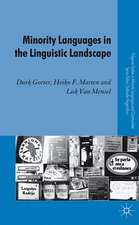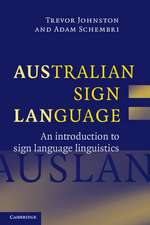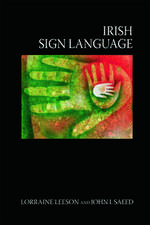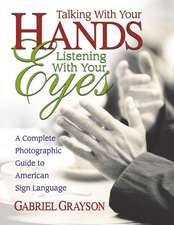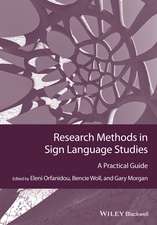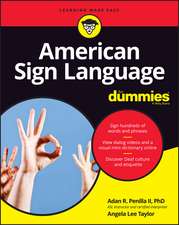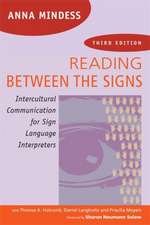Modality and Structure in Signed and Spoken Languages
Editat de Richard P. Meier, Kearsy Cormier, David Quinto-Pozosen Limba Engleză Paperback – 3 iun 2009
Toate formatele și edițiile
| Toate formatele și edițiile | Preț | Express |
|---|---|---|
| Paperback (1) | 431.11 lei 6-8 săpt. | |
| Cambridge University Press – 3 iun 2009 | 431.11 lei 6-8 săpt. | |
| Hardback (1) | 702.36 lei 6-8 săpt. | |
| Cambridge University Press – 23 oct 2002 | 702.36 lei 6-8 săpt. |
Preț: 431.11 lei
Nou
Puncte Express: 647
Preț estimativ în valută:
82.49€ • 86.13$ • 68.27£
82.49€ • 86.13$ • 68.27£
Carte tipărită la comandă
Livrare economică 04-18 aprilie
Preluare comenzi: 021 569.72.76
Specificații
ISBN-13: 9780521112581
ISBN-10: 0521112583
Pagini: 500
Ilustrații: 23 tables
Dimensiuni: 152 x 229 x 28 mm
Greutate: 0.73 kg
Editura: Cambridge University Press
Colecția Cambridge University Press
Locul publicării:Cambridge, United Kingdom
ISBN-10: 0521112583
Pagini: 500
Ilustrații: 23 tables
Dimensiuni: 152 x 229 x 28 mm
Greutate: 0.73 kg
Editura: Cambridge University Press
Colecția Cambridge University Press
Locul publicării:Cambridge, United Kingdom
Cuprins
1. Why different, why the same? Explaining effects and non-effects of modality upon linguistic structure in sign and speech Richard P. Meier; Part I. Phonological Structure in Signed Languages: 2. Modality differences in sign language phonology and morphophonemics Diane Brentari; 3. Beads on a string? Representations of repetition in spoken and signed languages Rachel Channon; 4. Psycholinguistic investigations of phonological structure in American Sign Language David P. Corina and Ursula C. Hildebrandt; 5. Modality-dependent aspects of sign language production: evidence from slips of the hands and their repairs in German Sign Language Annette Hohenberger, Daniela Happ and Helen Leuninger; 6. The role of manually coded English in language development of deaf children Samuel J. Supalla and Cecile McKee; Part II. Gesture and Iconicity in Sign and Speech: 7. A modality-free notion of gesture and how it can help us with the morpheme vs. gesture question in sign language linguistics (or at least give us some criteria to work with) Arika Okrent; 8. Gesture as the substrate in the process of ASL grammaticization Terry Janzen and Barbara Shaffer; 9. A cross-linguistic examination of the lexicons of four signed languages Anne-Marie Currie, Richard P. Meier and Keith Walters; Part III. Syntax in Sign: Few or No Effects of Modality: 10. Where are all the modality effects? Diane Lillo-Martin; 11. Applying morphosyntactic and phonological readjustment rules in natural language negation Roland Pfau; 12. Nominal expressions in Hong Kong Sign Language: does modality make a difference? Gladys Tang and Felix Sze; Part IV. Using Space and Describing Space: 13. Pronominal reference in signed and spoken language: are grammatical categories modality-dependent? Susan Lloyd McBurney; 14. Is verb agreement the same cross-modally? Christian Rathmann and Gaurav Mathur; 15. The effects of modality on spatial language: how signers and speakers talk about space Karen Emmorey; 16. The effects of modality on BSL development in an exceptional learner Gary Morgan, Neil Smith, Ianthi Tsimpli and Bencie Woll; 17. Deictic points in the visual/gestural and tactile/gestural modalities David Quinto-Pozos.
Recenzii
'For those researchers willing to ask the modality question, this volume will be an excellent resource.' First Language
Descriere
Signed languages are the visual-gestural languages of deaf communities. This book investigates their linguistic properties.

